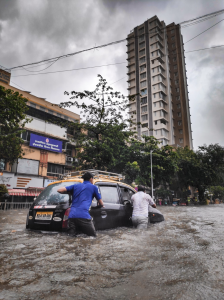The results of this analysis demonstrate that, no matter which mitigation scenario is undertaken, there are areas in Miami-Dade that are vulnerable to sea level rise. However, the extent of infrastructural and behavioural adaptation required to maintain safe living in Miami is considerably lower in the RCP 2.6 scenario, highlighting just how important it is that nations around the world reduce emissions as soon and as much as possible for the wellbeing of coastal cities. The amount of infrastructure (such as dykes, levees, and drainage systems) or people required to move in an RCP 8.5 scenario is so high that it seems unlikely Miami and Miami beach would be able to survive 0.95 meters of sea level rise. The costs (both financially and culturally) of such changes would be astronomical; that being said, even in lower emissions scenarios, a lot of work needs to be done in the coming half-century.
Unfortunately the realities of climate change are not restricted to sea level rise. The Gulf of Mexico and Caribbean, already at risk of extreme weather events (eg. hurricanes) are predicted to see a sharp increase in the frequency and severity of those extreme events. The consequences of such events on urban areas can be catastrophic; disruption to clean water infrastructure, road closures, and supply chain issues, are only a few of the challenges ahead. Sea level rise vulnerability and risk are exacerbated by other climate-change related disasters, putting even more people in danger.

Source: Unsplash
Poor people suffer the greatest losses from climate-related disasters. Gathering the socio-economic variables together, it becomes evident that vulnerability results from a lack of economic capacity and adaptive capacity. Poorer people may not be able to afford multiple properties, allowing them to simply move elsewhere – they may not own a car, making escape from rising water levels much more difficult, and they may live in more crowded areas, promising congestion in the event of mass displacement. Climate gentrification is quickly becoming the norm in Miami-Dade; many wealthy property owners in Miami Beach and other areas are purchasing properties much farther inland and at higher elevations, raising house prices in typically cheaper areas, increasing economic disparity and creating barriers for poorer populations to move away from vulnerable areas. This ‘flight’ reaction to rising sea levels may be an option for some; however, the cultural significance of historic neighbourhoods in Miami cannot be understated. A city of immigrants, some neighbourhoods have taken decades to build up, with the introduction of new cuisine, art and music to the city. Those communities may be separated and never recover if they are abandoned, and it is established that minority communities are historically the first to be ‘sacrificed’ in pursuit of the reduction of stress on city infrastructure.
Many of the largest cities in the world are located on the coastline, and this analysis is a clear demonstration of what lies ahead. Government policies must consider the wellbeing of all ethnic and socioeconomic groups in their disaster management planning, and must accept that changes are inevitable even if severe mitigation methods are taken. In Miami-Dade county, this may mean detailed escape plans for different communities with different vulnerability to flooding, as well as plans for equitable relocation of communities that will be forced to abandon their homes.